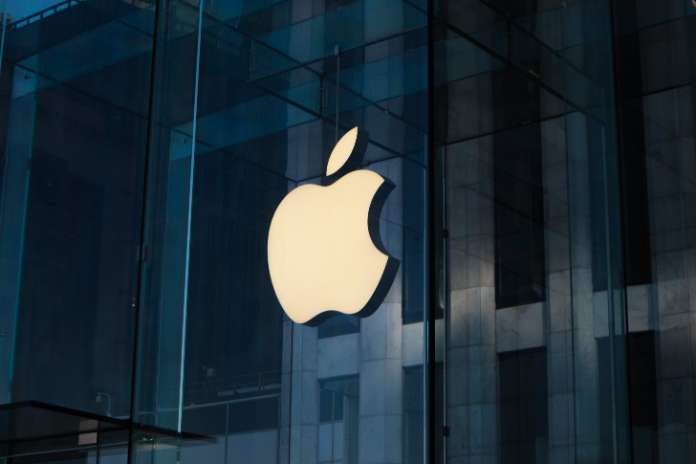Apple Inc. (NASDAQ:AAPL) is no stranger to market headlines, often influencing the stock market’s daily movements. On what was expected to be a positive trading day, Apple stock experienced an unexpected late-day plunge, sparking widespread speculation about what could have triggered the drop. In this article, we delve into the causes of this Apple stock volatility and examine the various theories behind the sudden sell-off.
Apple Stock Volatility: A Sudden Plunge
Apple, the tech giant known for its innovative products and consistent market performance, was anticipated to close last Friday on a high note. Investors were optimistic, with the company’s stock riding a wave of positivity throughout the day due to its increased weighting in major stock indexes. However, just 10 minutes before the closing bell, Apple stock experienced a sudden and steep decline, losing more than 2% from its intraday high to finish in the red. This unexpected drop in Apple stock volatility raised questions across Wall Street.
The cause of this sell-off wasn’t immediately clear. Many market analysts pointed to market-on-close orders, which are typically used by institutional investors to buy or sell shares at the market’s closing price. On this particular Friday, there was an unusually large imbalance of sell orders for Apple shares, with 30 million shares sold — a massive number considering the company’s average trading volume.
Theories Behind the Apple Stock Sell-Off
Several theories have emerged to explain this bout of Apple stock volatility. One of the most prominent suggestions is that some institutional investors may have capitalized on the increased liquidity from the rebalance event to trim their positions. Since Apple’s increased weighting in stock indexes was well-publicized, it’s possible that large, actively managed funds decided to sell significant portions of their Apple holdings while the market was still absorbing buying pressure from passive funds.
Matt Maley, chief market strategist at Miller Tabak + Co., noted that “some investors likely saw the rebalance as an opportunity to sell without causing too much disruption to the stock price.” By selling into a period of high demand, large shareholders could offload millions of shares without significantly driving down the stock price — until the last few minutes of trading, when the imbalance tipped the scale.
Another theory involves arbitrage players, who may have bought Apple stock earlier in the week in anticipation of the rebalance event. Piper Sandler & Co. estimated that the rebalance was set to create $35 billion in demand from passive funds, which could have drawn the attention of traders looking to profit from the stock’s movement. The stock had seen gains of nearly 6% over the three sessions leading up to Friday, lending credence to the idea that arbitragers might have positioned themselves ahead of the anticipated demand surge.
Apple Stock’s Performance After the Plunge
Despite Friday’s late-day volatility, Apple still posted a positive performance for the week, closing 2.6% higher overall. However, the volatility spilled into Monday, with Apple stock dipping by 1% in early trading before recovering some of the losses by midday.
Apple’s ability to recover quickly from short-term sell-offs underscores its strong market position. The company continues to perform well, driven by steady iPhone sales, growth in its services segment, and ongoing innovation in areas like augmented reality and artificial intelligence. Investors remain confident in Apple’s long-term prospects, even as short-term fluctuations in Apple stock volatility can create opportunities for both traders and long-term shareholders alike.
Outlook for Apple Stock Amid Volatility
Apple’s stock performance often mirrors broader market trends, especially as one of the most heavily weighted companies in major indexes. While sudden drops in Apple stock volatility can stir concern, the company’s fundamentals remain strong. Analysts expect Apple to continue benefiting from its expanding ecosystem, with new product launches and services likely to fuel future growth.
For investors, this recent bout of Apple stock volatility may offer a buying opportunity. As one of the most valuable companies in the world, Apple’s ability to recover from short-term price dips has been demonstrated time and time again. With analysts remaining optimistic about Apple’s long-term outlook, these short-term fluctuations are unlikely to deter those with a long-term perspective.
Conclusion: Navigating Apple Stock Volatility
The recent Apple stock volatility, driven by unexpected late-day selling, has left market participants speculating about the causes. Whether due to institutional repositioning, arbitrage strategies, or market-on-close orders, the sharp plunge was temporary, with Apple’s stock performance remaining positive for the week. For long-term investors, these moments of volatility present opportunities, as Apple’s strong fundamentals continue to support its growth prospects.
Featured Image: Unsplash © Laurenz Heymann









